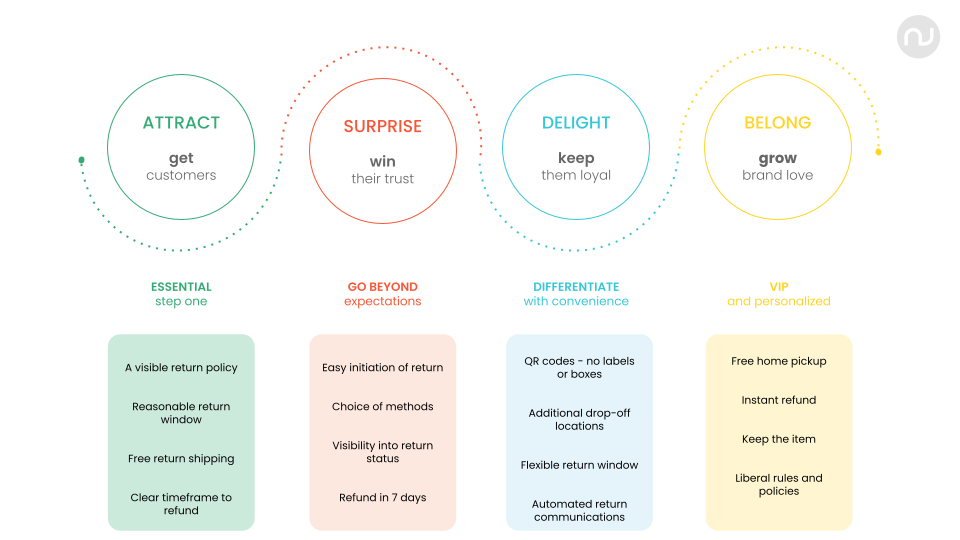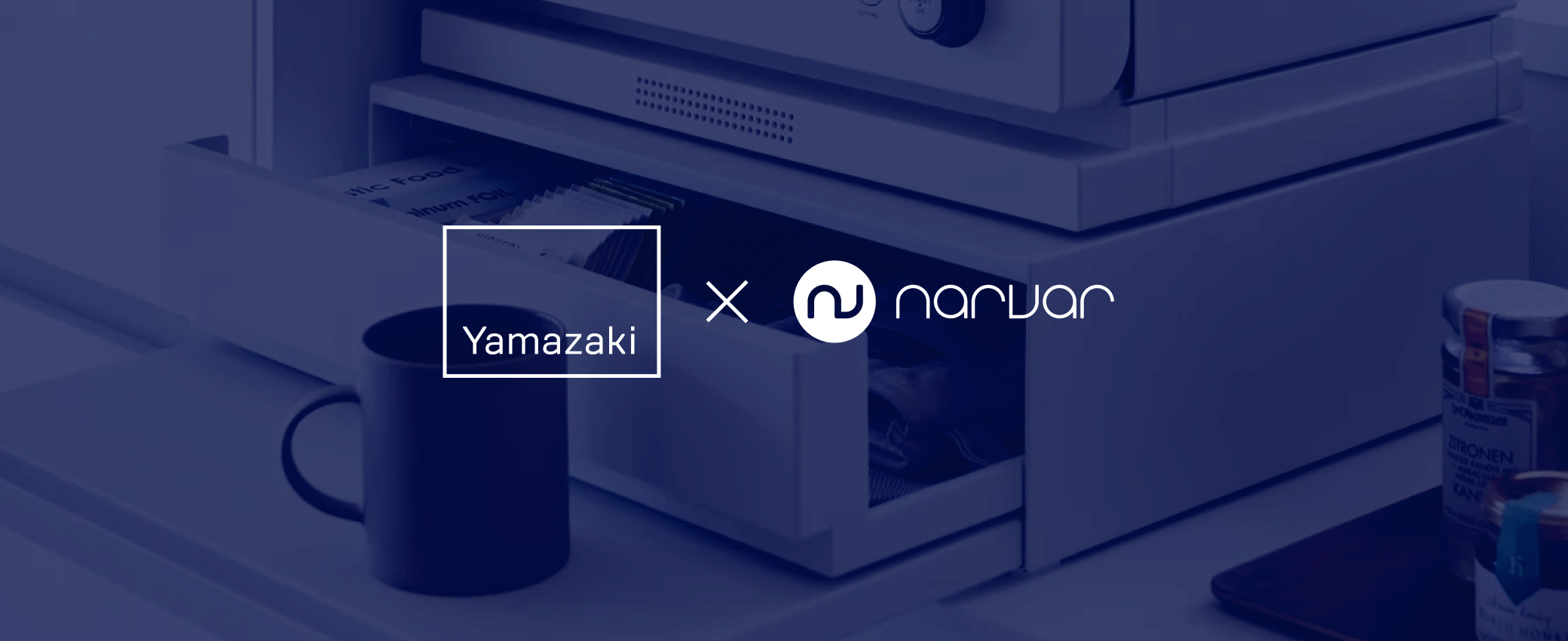

AI-powered delivery date estimates to boost conversion
Give shoppers peace of mind and protect and grow your bottom line
Personalized tracking experiences to build brand loyalty
Returns and exchanges management to mitigate fraud and reward best customers
Proactive communication to drive customer lifetime value
Delivery claim management to tackle fraud and build trust
The 4-Step Return Strategy to Power Your Brand’s Flywheel
%2520(25).png)
As the curtain falls on the 2021 holiday peak season, retailers will see 80% of their annual returns come in. Today, consumers are shopping with an explicit plan to return many of their purchases. And, expecting frictionless return experiences that will, 1. prompt the purchase and 2. keep them coming back.
In spite of appearances, returns are not an after-the-fact part of shopping anymore — they sway ecommerce conversion. How retailers handle returns can impact every stage of a customer’s journey with their brand. When done well, returns can power loyalty helping retailers differentiate their brand and create a competitive advantage.
Our Return Experience Framework formulates how perceptions on ecommerce returns can power your brand’s flywheel influencing all aspects from consideration to conversion and advocacy.

Boost conversions via returns
Don’t hide your return policy, even if it isn’t the most flexible. Place everything customers need to know front and center in the buying journey. They will appreciate the transparency and make an informed decision. That alone will prevent future frustration and negative association with the brand. Additionally, by setting clear expectations, you will be able to reduce expensive and time-consuming support calls to answer questions that could have been avoided.
If you’re able, provide free return shipping — it can be a deal breaker. A study shows that 74% of customers empty their carts if they are expected to pay for return shipping. Free returns is the #2 reason customers shop online, #1 is free shipping. Consumers will often cite the brand’s returns policy as second only to price in driving the purchase decision.
When it comes to return windows, the sweet spot is 30 days, and that's considered reasonable by many consumers. Tailor your return window to the product category and try to benchmark against peers and competitors if you can.
PRO TIP: Include a short video of a typical return experience with your brand on every product description page.
Gain the upper hand with first timers
Lose the battle, win the war. So what if a purchase didn’t work out? Retailers still have the opportunity to keep a customer. Returns are the litmus test for repeat purchases. 95% first-time customers who had an easy returns experience said they would shop with the retailer again.
Provide links to initiate a return in as many channels as possible: on the website, in the app, or through a link in the emails sent after the order was placed. Provide a choice of return methods such as by mail (with top carriers) or a store drop-off. The benefit to retailers is that merchandise will get returned faster and you be able to recommerce without losing costs.
Don’t miss surprising customers with a quick refund as soon as the return is received. Automate communication at key checkpoints such as ‘item received’ and ‘refund issued’ to alleviate anxiety.
PRO TIP: Free return shipping is a powerful lever to influence preferred behavior. For example, encourage customers to return an item within 15 days to receive a full refund or get store credit if they need longer.
Provide unparalleled convenience
Heard over and over, retaining customers is cheaper than acquiring them. With the gazillion choices consumers have today, why should they default to your brand? Because you make it convenient — to buy, try, and return. And if that’s true, gravitating to your brand will become muscle memory. Amazon’s returns experience continues to prove that convenience is king.
Don’t make customers jump through hoops to make a return. Remove every hassle, hint: boxes and labels included. Through QR codes, customers can simply hand over their item to a carrier who will scan the code and take care of packaging and printing. Reports show that consumers are willing to pay a nominal fee for such convenience.
Tag-team with a logistics partner that allows customers to return items to alternate locations like grocery stores or malls. That way, they can run an errand alongside making the return.
PRO TIP: Move away from pre-printed return labels with a branded return portal that captures return reasons to help improve product information up front.
Save the best for lasting relationships
Let your most loyal customers feel the love by making their experience VIP: very important and personalized. Lay down the red carpet by offering a free home pickup. Provide an instant refund on the first carrier scan so they get a ‘refund processed’ notification before the truck leaves.
Segment VIPs and make their return policy as liberal as possible so they may have the best your brand can offer — longest return windows, seamless exchanges, keep-the-item, sorry-it-didn’t-work-out discounts and more.
Replicate an in-store shopping experience in the consumer’s home so they can go through more purchases with you. Rewarding your most loyal customers will pay off in the long run with higher customer LTV and brand advocacy.
PRO TIP: Reserve high-cost benefits like free return shipping for VIPs or to acquire new customers who may need that peace-of-mind to experiment with your brand.
Placing customers at the heart of their returns strategy will allow retailers to steer buying behaviour and loyalty in the direction they want. A one-size-fits-all return policy is passé. Tailor your strategy to make merchandise returns harder for fraudsters and favourable for VIPs. Personalization is the key to balancing the proverbial equation of making returns convenient for customers and sustainable for the business.

























